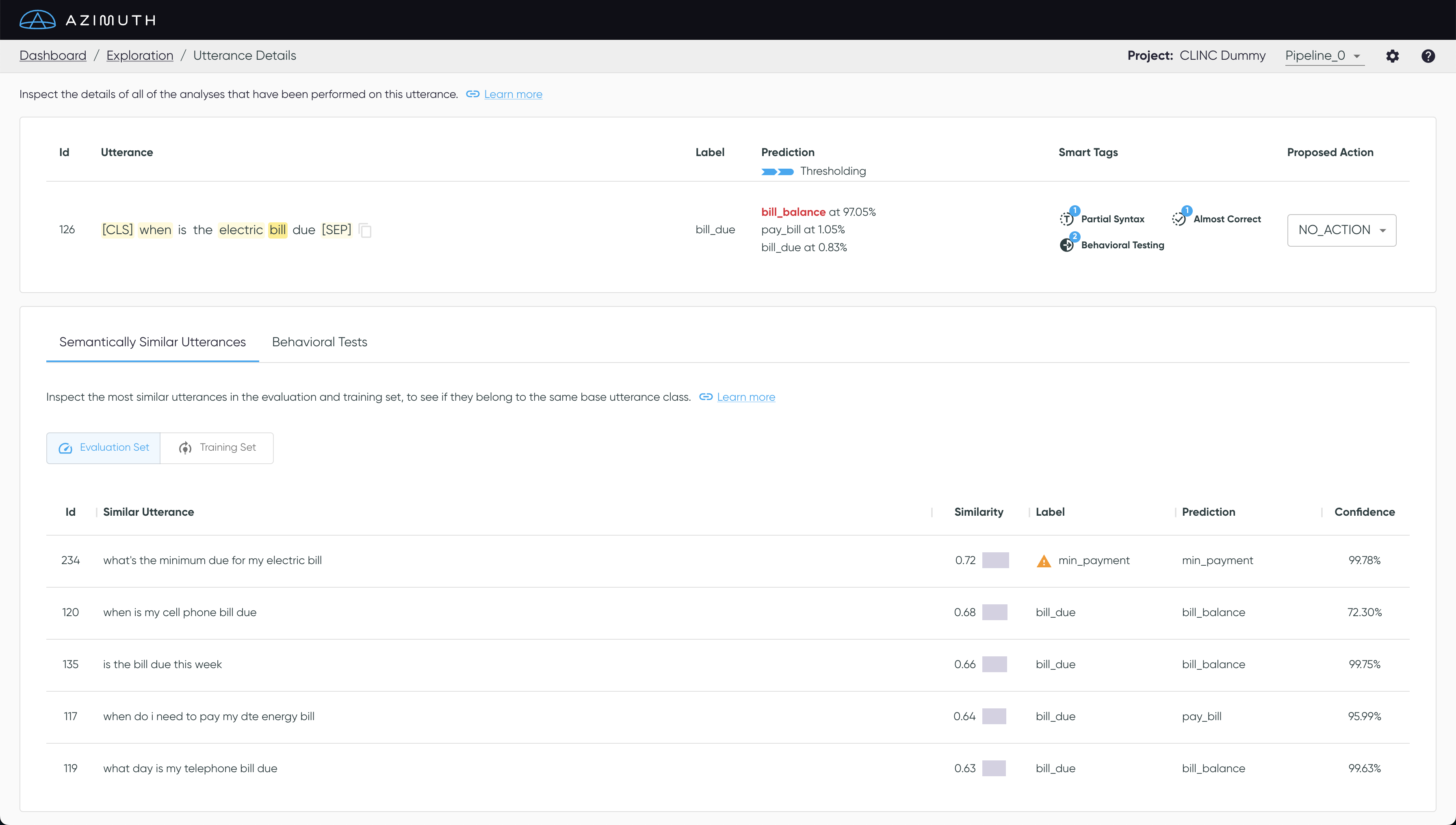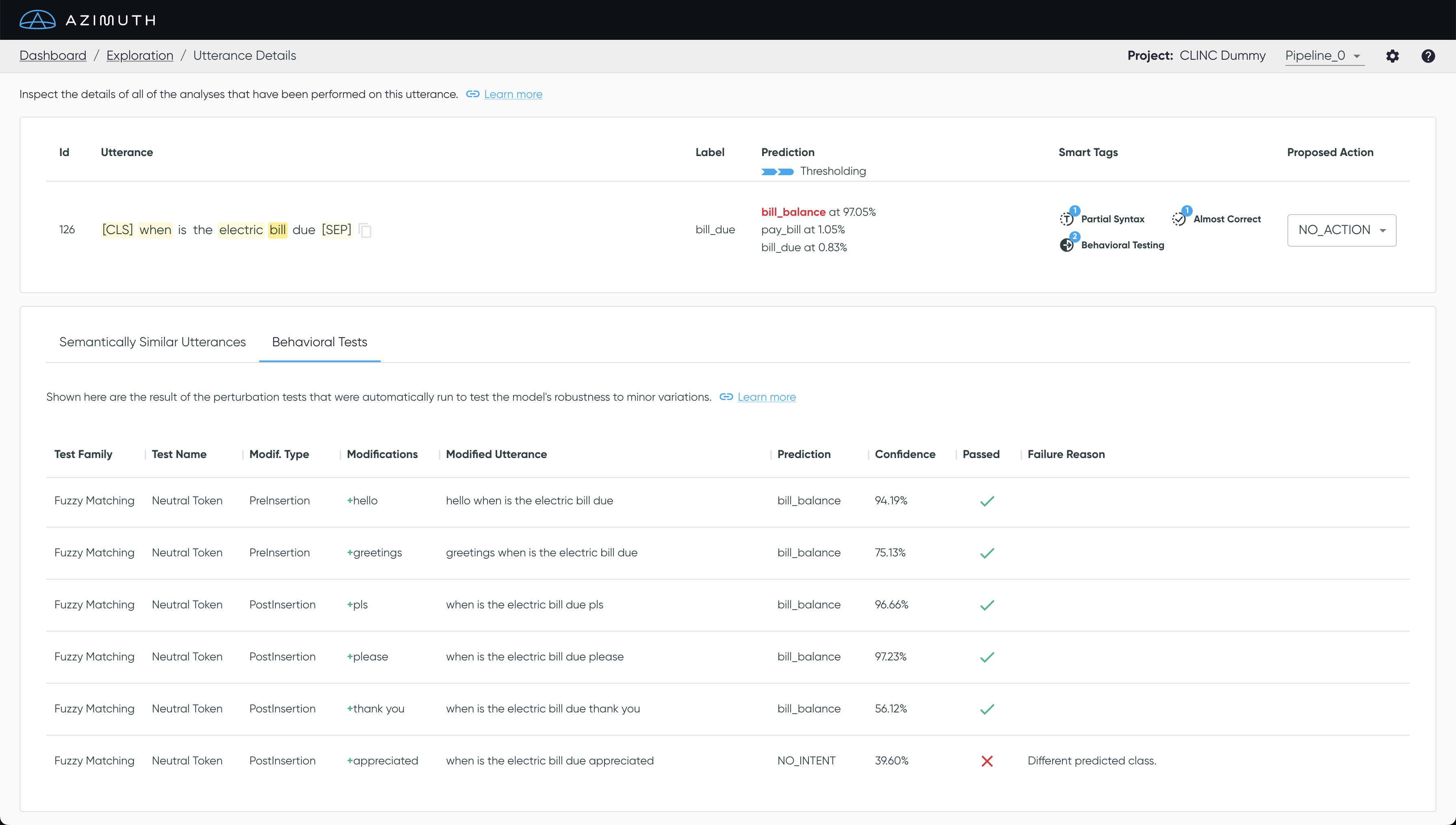Utterance Details
The utterance detail page shows more information about individual utterances. See the including saliency per token, semantically similar utterances, and model performance on behavioral tests automatically generated from the utterance.
Utterance Information
The top section shows the utterance details:
- Utterance: The utterance and its per-token saliency (if available for the model's architecture). Hover over the tokens to the see the associated saliency value.
- If pre-processing steps are returned by the pipeline, blue chevrons will be shown, allowing the utterance to be displayed after each pre-processing step, from the raw utterance to the processed version sent to the model.
- Label: The utterance's labeled class (the target).
- Predictions:
- The top 3 predictions for this utterance are shown.
- The top prediction is highlighted using the prediction outcome color.
- If the top prediction was converted to the rejection class based on the threshold, it will be added as a 4th element at the top.
- By clicking on the blue chevrons, the prediction results after each post-processing step can be viewed, including the model's output before any post-processing.
- Smart tags (where applicable): An automatically computed tag highlighting a certain characteristic of the utterance (e.g., long utterances, utterance is missing a verb, utterance contains multiple sentences). For more information, see Smart Tags.
- Proposed Action (editable): You can add a proposed action to identify further steps required for an incorrectly predicted utterance. For more information, see Proposed Actions.

Semantically Similar Utterances
The Semantically Similar Utterances tab shows the top 20 most similar utterances in the dataset as calculated using sentence embeddings. For more information, see Similarity Analysis.
- The toggle buttons control whether to search for similar utterances in the evaluation set or the training set.
- Utterances that are similar but have different labels or predictions can indicate possible problems with the dataset or the model. An ⚠ icon indicates utterances that are from a different class than the base utterance.
- Clicking on the row of an utterance in the table will open the details page for that utterance.
Behavioral Tests
The Behavioral Tests tab displays the result of the behavioral tests that were run to test the ** model's robustness to minor modifications**. A failing test occurs when a modified utterance has a different predicted class or when prediction certainty is altered by more than a set threshold. For more information, see Behavioral Tests.

Only available when a pipeline is defined
Behavioral tests are only available when a pipeline is available. As such, the tab will be empty for file-based configurations.